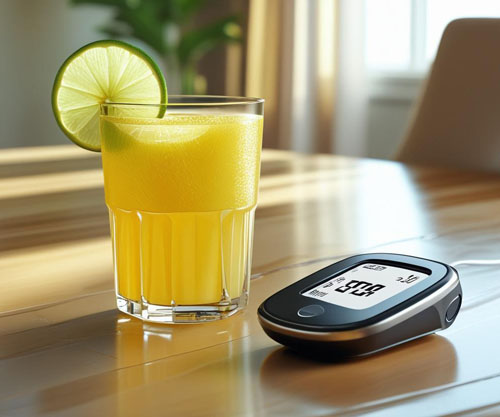A new study has demonstrated that consuming Palatinose (isomaltulose) improves the body’s hormonal and glycaemic response to a second meal by increasing GLP-1 (glucagon-like peptide-1) and PYY (peptide tyrosine tyrosine) levels, helping adults with metabolic syndrome to manage their blood sugar better.
The human intervention study followed a double-blind, randomised and placebo-controlled crossover design (RCT).

As part of the trial, 15 adults with metabolic syndrome (with a mean age of 62) consumed either 50 g of isomaltulose or 50 g of sucrose incorporated into a 500 mL citrus drink.
The study followed two trial protocols: Protocol A included a breakfast with the test drink, followed by 3 hours of metabolic monitoring, a standardised lunch after 3 hours and a further 6 hours of monitoring afterwards.
Protocol B comprised a breakfast followed by 3 hours of metabolic monitoring, the test drink 3 hours after breakfast and 1 hour before a standardised lunch, which was followed by 5 hours of monitoring.
The key measurements monitored included blood glucose, insulin and gut hormones (GLP-1, PYY), which are known to promote satiety and support blood glucose control.
The findings showed that Palatinose — a slow-release carbohydrate derived from beet sugar — resulted in a lower blood glucose response compared with sucrose, characterised by a significantly lower blood glucose peak.
In parallel, the release of beneficial gut hormones (GLP-1 and PYY) was increased. This resulted in a slower and lower blood glucose response to lunch, also described as a second-meal effect.

The results demonstrate that Palatinose not only lowers post-meal glucose spikes, but also improves hormonal balance with time and thereby supports metabolic stability across meals.
Adults with metabolic syndrome in particular benefit from this prolonged hormone response, leading to stabilised blood glucose levels and improved insulin release, suggesting increased insulin sensitivity.
Importantly, the benefits were more pronounced with the 3-hour preload (Protocol A) than the 1-hour (Protocol B), highlighting the critical importance of timing for maximum effect.
This also offers helpful guidance for real-life applications, for example, functional snacks containing Palatinose that can be eaten between meals.
Dr Stephan Theis (pictured), Head of Nutrition Science and Communication at BENEO, commented: “This study shows how smart sugar choices such as Palatinose can help the body to manage blood sugar not just after eating, but even hours later."
"It strengthens the evidence for the second-meal effect, resulting from the sustained release of GLP-1 and PYY. The findings highlight the strong potential of functional carbohydrates in supporting long-term metabolic health.”
In the EU, Palatinose benefits from an authorised health claim on the blood glucose-lowering effect, while structure and function claims for lower rise in blood glucose and GLP-1 release are possible in the US.

